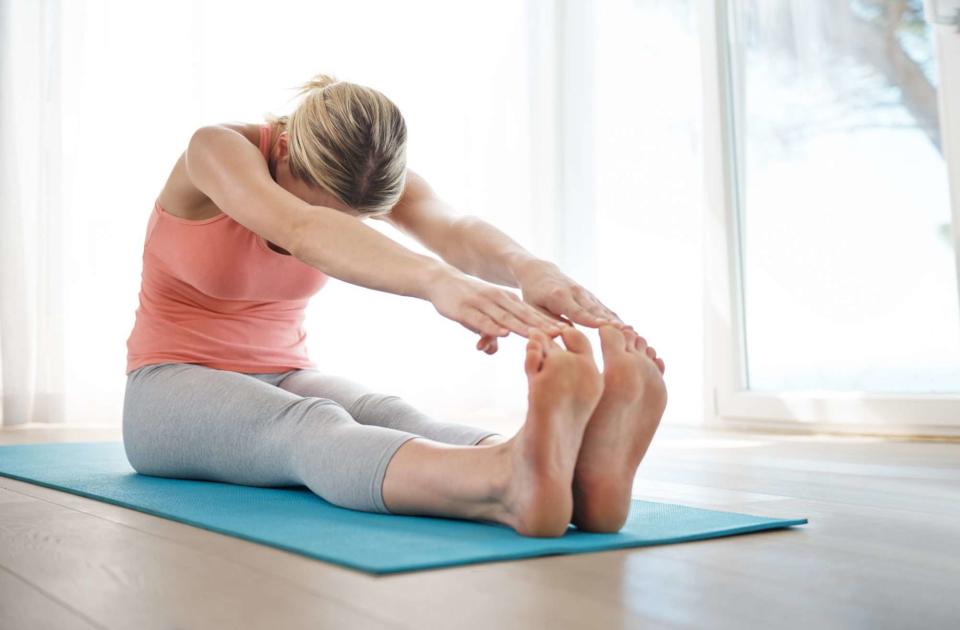The Best Diastasis Recti Exercises to Heal Your Core
Looking for the best exercises for diastasis recti? Before you do a single crunch, read our guide to the most and least effective movements.

It should come as no surprise that people who have been pregnant and those who have given birth may notice some changes to their abdominal areas as a result of pregnancy. Everyone is different and things like weight, height, genetics, and diet can all affect how your stomach looks during and after pregnancy. But nearly everyone who is pregnant will get a condition called diastasis recti, when the abdominal muscles separate to allow room for a growing uterus.
For some people, that ab separation can last long after the pregnancy is over. In fact, diastasis recti could be a cause of a rounded—even still pregnant-looking—abdomen months or years after giving birth. And crunches will not only fail to improve it, but can actually make it worse. To key to healing your core after pregnancy is doing the right type of exercises to bring your muscles back together.
If you have diastasis recti, keep reading to find out which exercises you should skip—and which ones can help heal that abdominal separation.
Do I Have Diastasis Recti?
Before you even think about doing an abdominal exercise, perform a simple self-test to determine whether you actually have diastasis recti, a gap between your right and left abdominal wall muscles that can result in a protruding pooch-like shape.
Related:Your Postpartum Body: 20 Ways it Changes After Baby
Start by lying on the floor with your knees bent and feet flat. Placing one hand on your tummy (ensuring your fingers are on your midline at your navel), gently press down with your fingertips. Perform a mini crunch by bringing your head up. Your shoulders should remain on the ground. Feel for separation along the sides of your rectus abdominis muscles; this might indicate diastasis recti (DR). (And when in doubt, you can always ask your primary or pregnancy care provider to do an assessment for DR too.)
Diastasis Recti Exercises to Avoid
Skip any movement or exercise that places strain on the midline or causes the belly to bulge outward, like sit-ups and planks. "When this action is repeated forcefully and frequently, the degree of separation can actually worsen," says Kevin Brenner, M.D., F.A.C.S., a board-certified plastic and reconstructive surgeon based in Beverly Hills. This is because these types of exercises put pressure on the internal abdominal muscles, causing them to bulge out. You need to repair the outer muscles to bring them back together before doing any internal work.
Also avoid heavy lifting, as well as any exercises that involve twisting the spine or working the abdominal wall against the force of gravity, says Helene Byrne, a prenatal and postpartum health and fitness expert and founder of BeFit-Mom. These no-no exercises include most traditional ab work such as crunches, oblique curls, reverse curls, and roll-ups.
Backbends and other spinal extension movements are also out, because they increase stress on the abdominal tissues, says Ben Butts, P.T., director of rehabilitation services and performance therapy at Providence Saint John's Health Center in Santa Monica, California. "Traditional exercises to get a six-pack are not going to give you the benefit you are looking for," he says.
Related:It's Time to Embrace Your Postpartum Belly
Also, some approaches to healing diastasis recti can be more controversial; these include using a splint, or abdominal binder, to flatten the stomach. "Simply doing basic ab exercises with the midline splinted closed is not effective. Neither is wearing any kind of external support device for long periods," says Byrne. "Both of these common, yet less effective, methods do not teach the transverse abdominis to do its job—stabilization—properly. Wearing an external support device for long periods can [even] inhibit [the muscles'] proper functioning."
The Best Exercises for Diastasis Recti
Are you looking for a diastasis recti workout? Byrne suggests abdominal compressions, pelvic tilts, toe taps, heel slides, single-leg stretches, and bridges with belly scooping. Always keep the belly pulled in, rather than doing any movement that pushes it out (and causes the telltale bulge on the midline).
Ilaria Cavagna, a New York-based pilates instructor, suggests starting with the oblique muscles as a means of bringing together the separated muscles. "Only working the oblique muscles will bring the two abdominal walls back together," she says. "Think of your abs as a corset that goes from the hip bones up the ribs, and think of the action that you would do to tighten the corset: Both hands pull towards the center from the sides, like the obliques do."
Related:Do You Need Diastasis Recti Surgery?
It's also important to know the correct breathing techniques. "To avoid creating a compression in the abdominal cavity, it is fundamental to exhale during moments of effort," Cavagna says.
Several at-home exercise programs—like the MUTU System, Tupler Technique, and Dia Method/Every Mother—are specifically designed to help (and not hurt) people with diastasis recti.
When to Start Exercising
As with all postpartum decisions, consult with your doctor about when your body may be ready for an exercise regime. Butts says the general recommendation is to wait about six weeks post-pregnancy.
When your doctor gives the go-ahead and you feel ready, get right to work. "For some patients with mild diastasis, regular exercise in the form of a core abdominal work out can improve the integrity of the muscles and reduce the amount of separation," says Dr. Brenner. "I have found this to be most effective during the first six to 12 months following delivery."
That said, given the challenges in determining safe core exercises, it may be best to seek the guidance of a pelvic floor physical therapist who is very well trained in these matters.

